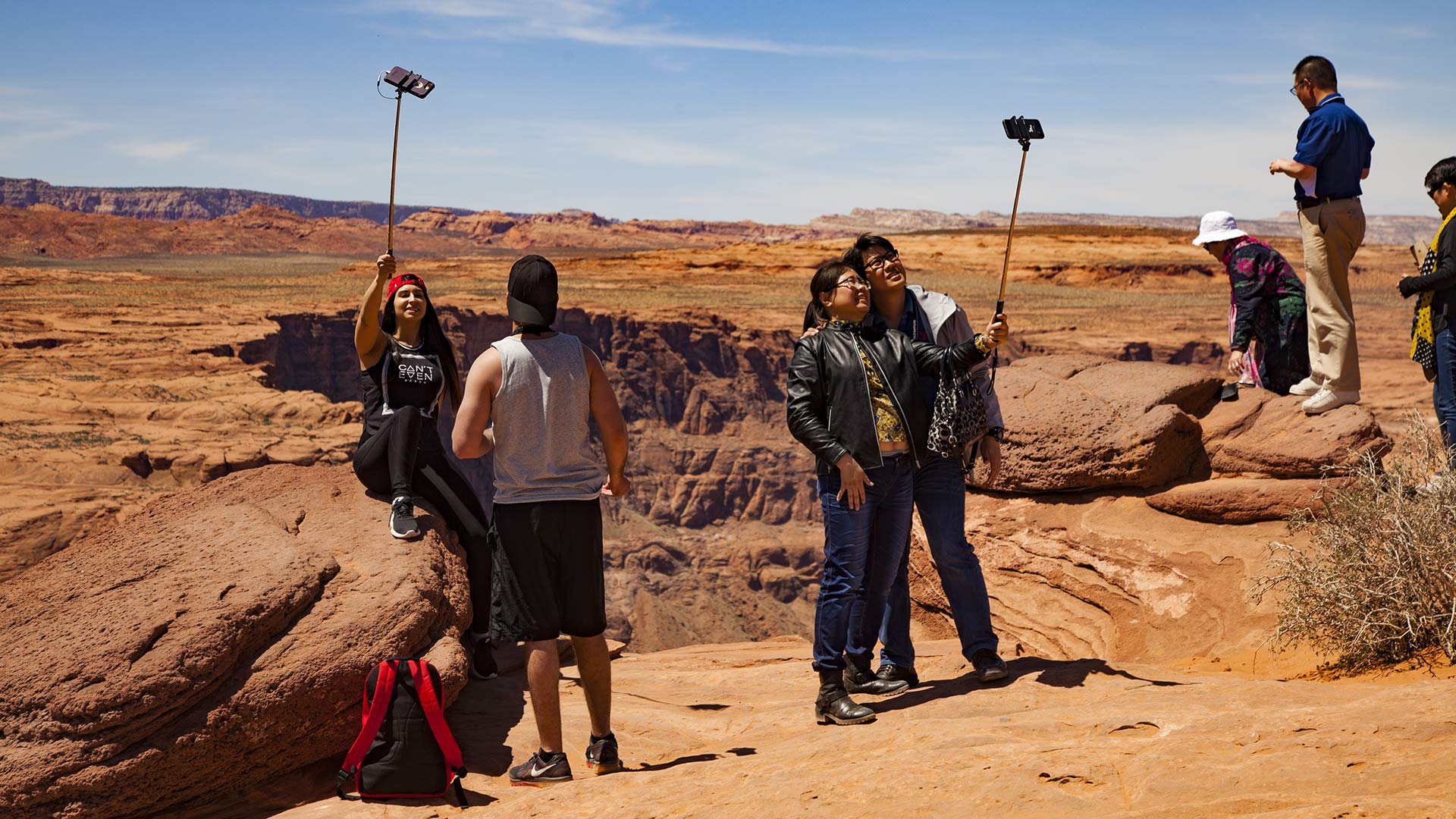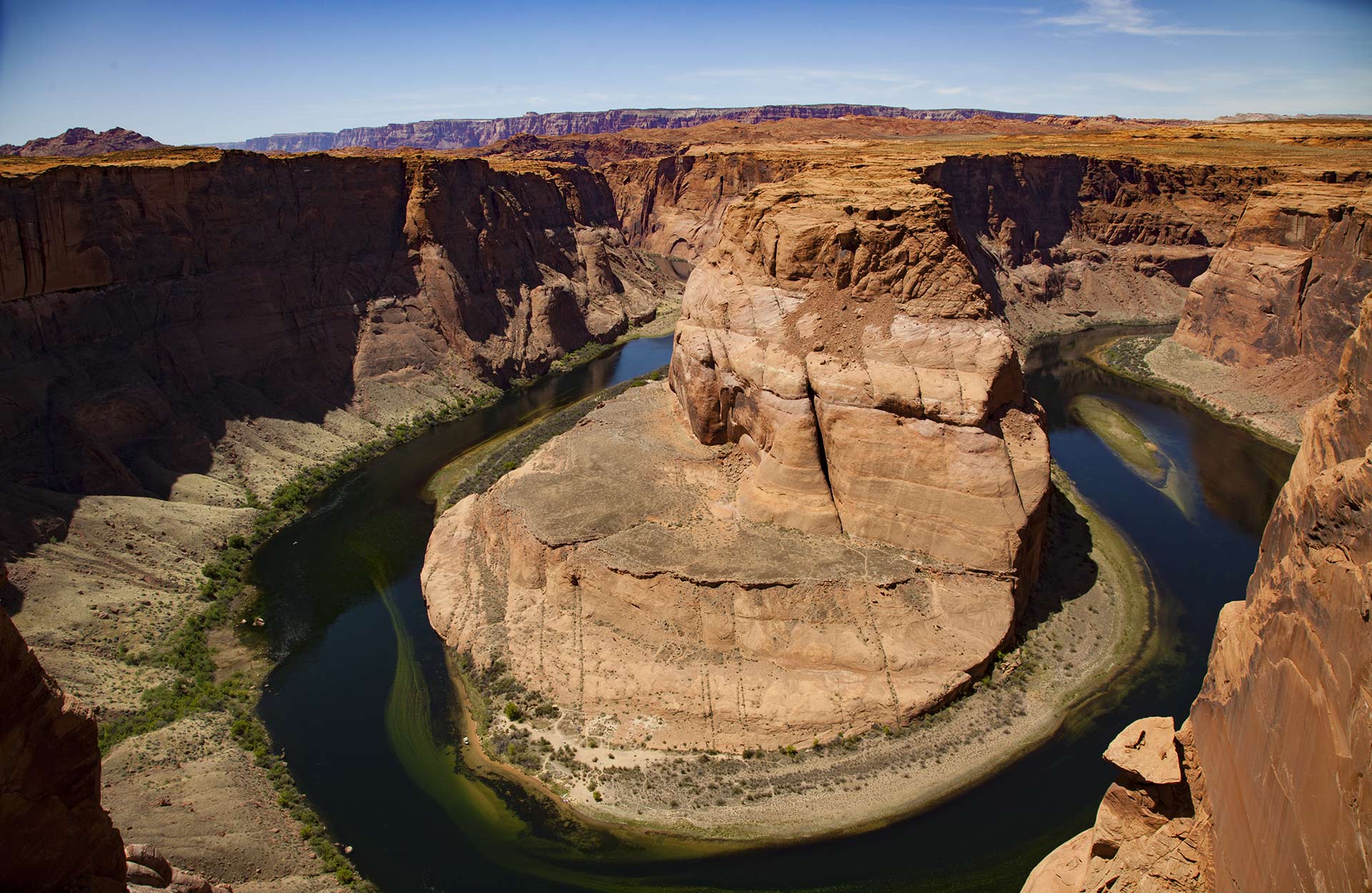 Tourists snap selfies at the iconic Horseshoe Bend, near Page, Arizona, April 2018.
Tourists snap selfies at the iconic Horseshoe Bend, near Page, Arizona, April 2018.
PHOENIX — A viewpoint reachable by a half-mile trail from a parking lot on U.S. 89 in northern Arizona provides a spectacular view of a dramatic bend in the Colorado River, but it has become maybe a little too popular.
Tour buses, vans, SUVs and cars disgorge thousands of visitors daily at Horseshoe Bend in Glen Canyon National Recreation Area, so many that authorities have imposed parking restrictions for safety, The Arizona Republic reported.
There's also a newly constructed viewing deck with a railing that provides a safer alternative than the sheer-edged ledge along the rock ridge that is hundreds of feet above the river. And another parking lot is the planning stages.
Visitors come from as far as China, Germany, France and Japan. Roughly 1.5 million people ventured to the attraction last year.
Officials for Glen Canyon National Recreation Area estimate that 2 million people will visit in 2018. Precise numbers aren't available because there's no entrance station.
Large tour buses are no longer allowed to park. They can only drop off and pick up passengers, according to restrictions that went into effect in June.
 VIEW LARGER Horseshoe Bend, near Page, Arizona, April 2018.
VIEW LARGER Horseshoe Bend, near Page, Arizona, April 2018. Visitors can no longer park along U.S. 89, a dangerous but common practice when the lot fills up. Drivers who can't find a spot in the lot must return at another time.
Visitors wander along the unprotected rim. There no trails leading down, just a sharp edge with solid ground on one side and empty air on the other.
Accidents are rare, but they do happen. That is partly why park officials approved a $750,000 project to build a viewing deck with safety railing, as well as gently sloping, ADA-compatible trails that skirt the high point of the ridge. The new path is slightly longer but easier to navigate.
The deck opened June 19, providing a safer way to view the canyon, though visitors are free to explore the ledge as they please.
The opening of the new trail was postponed to January 2019 as construction was suspended due to the summer heat. Work will recommence in September.
A second phase of improvements starts later this year when the City of Page begins construction of a new parking lot.
The project, now in the design process, will include 310 parking stalls for cars and buses, with a potential of up to 130 additional stalls, according to Kim Johnson, the city's community development director. She said work is expected to be completed by spring 2019.
The plans also include the installation of three booths to facilitate fee collection, Johnson said. The amount has yet to be determined, though officials are considering $10 for cars, $50 per small or mid-size bus and $100 per large bus.
Revenue is expected to be split between the National Park Service and Page.

By submitting your comments, you hereby give AZPM the right to post your comments and potentially use them in any other form of media operated by this institution.